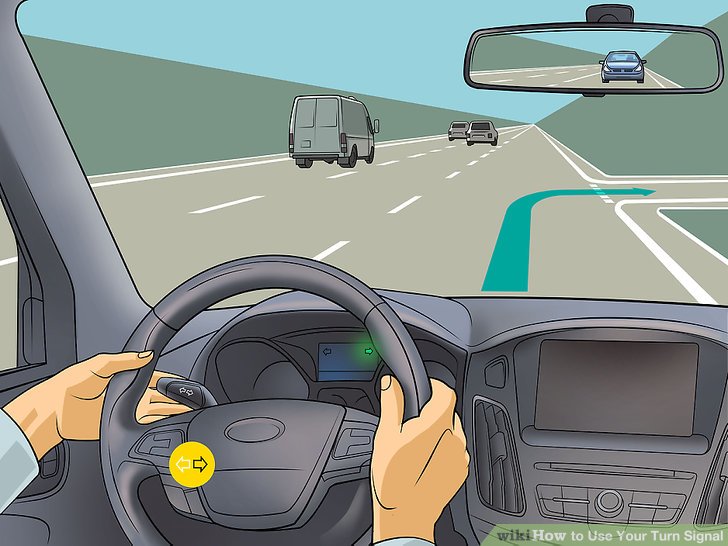When Should You Activate Your Turn Signal

The humble turn signal, often overlooked yet absolutely critical, is the unsung hero of road safety. While the concept seems straightforward – flick the stalk, indicate your intentions – the reality is far more nuanced. Activating your turn signal isn't just a formality; it's a direct line of communication with other drivers, cyclists, and pedestrians, and knowing precisely when to deploy it can be the difference between a smooth maneuver and a collision.
Lane Changes: The Obvious (and Often Ignored) Case
Perhaps the most fundamental use of the turn signal is during lane changes. But simply using it isn't enough; timing is everything. The key is to signal before you begin to move into the adjacent lane. Think of it as announcing your intentions well in advance, not as a last-second announcement as you're already drifting over. A general rule of thumb is to activate the signal at least 100 feet before the intended lane change on highways and freeways, and at least 50 feet in city driving. Of course, this is just a guideline. Increase these distances in poor weather conditions or if visibility is limited.
Furthermore, ensure there is adequate space in the target lane before signaling. Signaling into a lane that's already occupied is not only ineffective but can also be interpreted as aggressive or confusing. Observe the traffic flow, check your mirrors (both side and rearview), and perform a head check to eliminate blind spots. Once you've confirmed a safe opening, signal, and then smoothly execute the lane change.
Turns and Intersections: Predictability is Paramount
Approaching an intersection demands even greater precision in signal timing. Signaling too early can mislead other drivers into thinking you intend to turn at an earlier junction. Signaling too late gives them little or no warning, increasing the risk of a collision.
The ideal approach is to signal at least 100 feet before the intersection in urban areas and 200 feet in rural areas where speeds are generally higher. This provides ample time for other drivers to anticipate your maneuver and adjust their own driving accordingly. Avoid signaling immediately before braking; this can be confusing, as drivers might assume you're only slowing down, not preparing to turn. Ideally, signal, then gradually decelerate while preparing for the turn.
When navigating complex intersections with multiple turning lanes, be especially mindful of your signal's clarity. Confirm that your signal clearly indicates which direction you intend to proceed, especially if the intersection geometry is unconventional.
Merging onto Freeways: A Symphony of Signals and Speed
Merging onto a freeway requires a delicate balance of speed, observation, and communication. Activate your turn signal before you reach the end of the on-ramp. This signals your intention to merge to drivers already on the freeway. Accelerate to match the flow of traffic on the freeway. Avoid merging at a significantly lower speed than the surrounding vehicles; this creates a hazard and disrupts the traffic flow.
Continue signaling until you have successfully merged into a lane. Don't assume that because you've signaled, other drivers will automatically yield. Maintain awareness of your surroundings and be prepared to adjust your speed or position as needed. If necessary, be prepared to abort the merge and circle around for another attempt rather than forcing your way into traffic.
Parking and Pulling Over: Communicating Your Stationary Intentions
Even when coming to a stop, signaling is essential. If you intend to parallel park, signal in the direction of the parking space to alert other drivers that you're slowing down and preparing to maneuver. This allows them to anticipate your actions and avoid collisions. Similarly, if you need to pull over to the side of the road, activate your turn signal in the direction of the curb to indicate your intention to leave the traffic lane.
Remember to deactivate your signal once you have completed your maneuver. A constantly blinking turn signal can be just as confusing as not signaling at all, as it can mislead other drivers into thinking you intend to turn or change lanes when you don't.
Roundabouts: Signalling Exits with Precision
Roundabouts require a specific signaling protocol. Signal your intention to enter the roundabout if you are turning left or making a U-turn. There is no signal to enter if you are going straight. The most crucial signal is the right turn signal to indicate your exit. Activate the right turn signal as you approach your intended exit. This clearly communicates to other drivers your intention to leave the roundabout, preventing confusion and potential collisions. Signaling the exit is arguably more important than signaling the entry, as it clearly indicates your immediate actions.
In conclusion, mastering the art of turn signal usage isn't merely about following the law; it's about contributing to a safer and more predictable driving environment for everyone. By understanding the nuances of timing and context, drivers can transform the humble turn signal into a powerful tool for communication and collision avoidance. Never underestimate the power of a well-timed signal.
